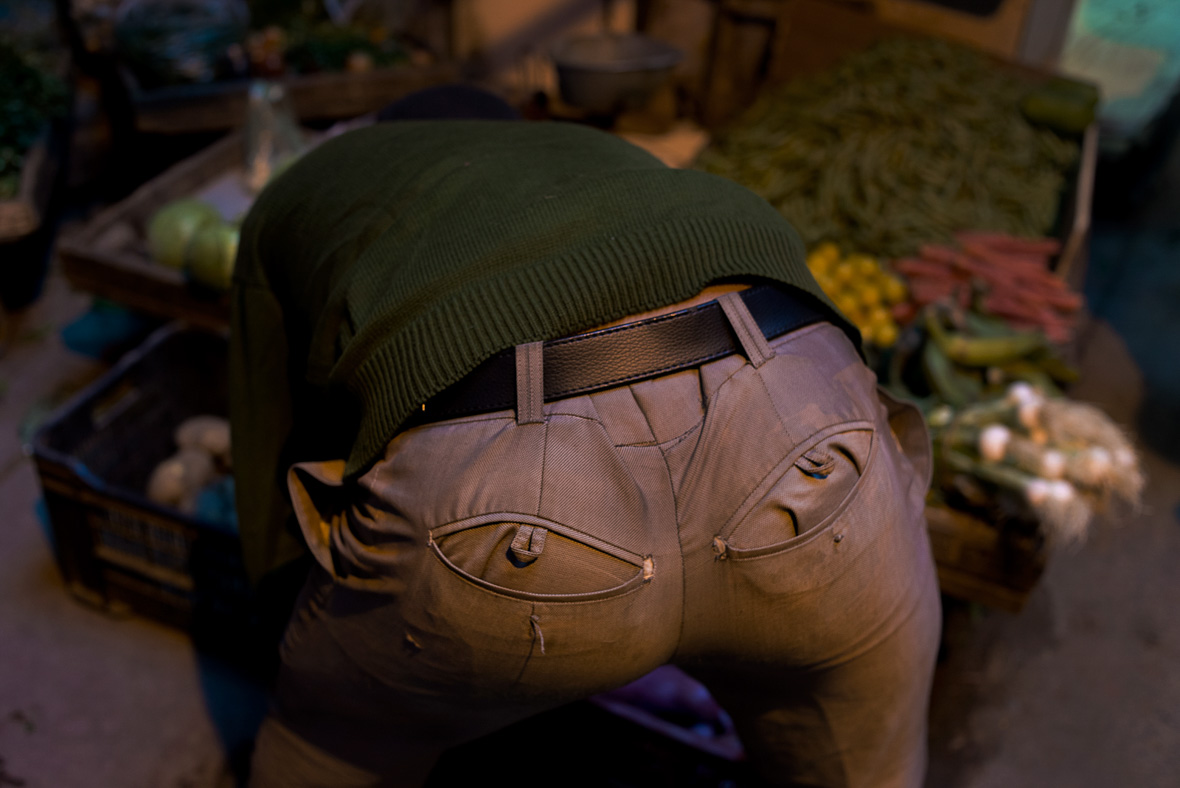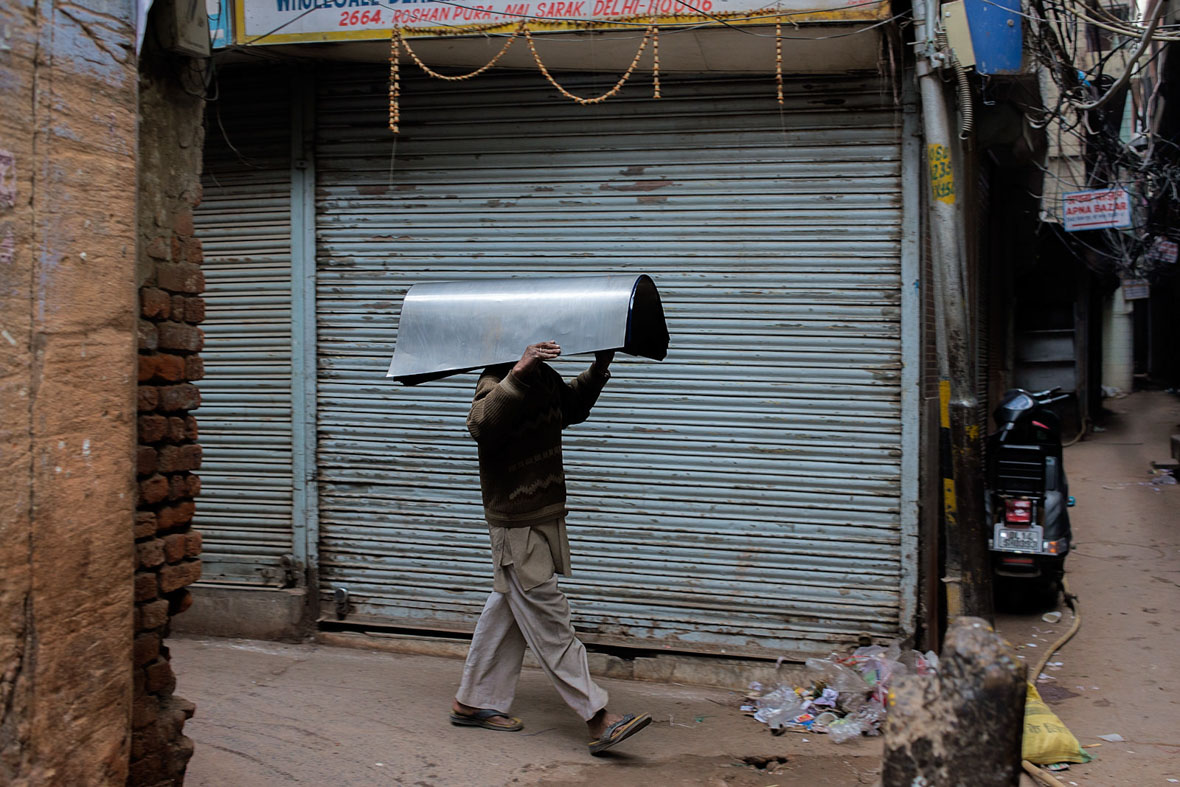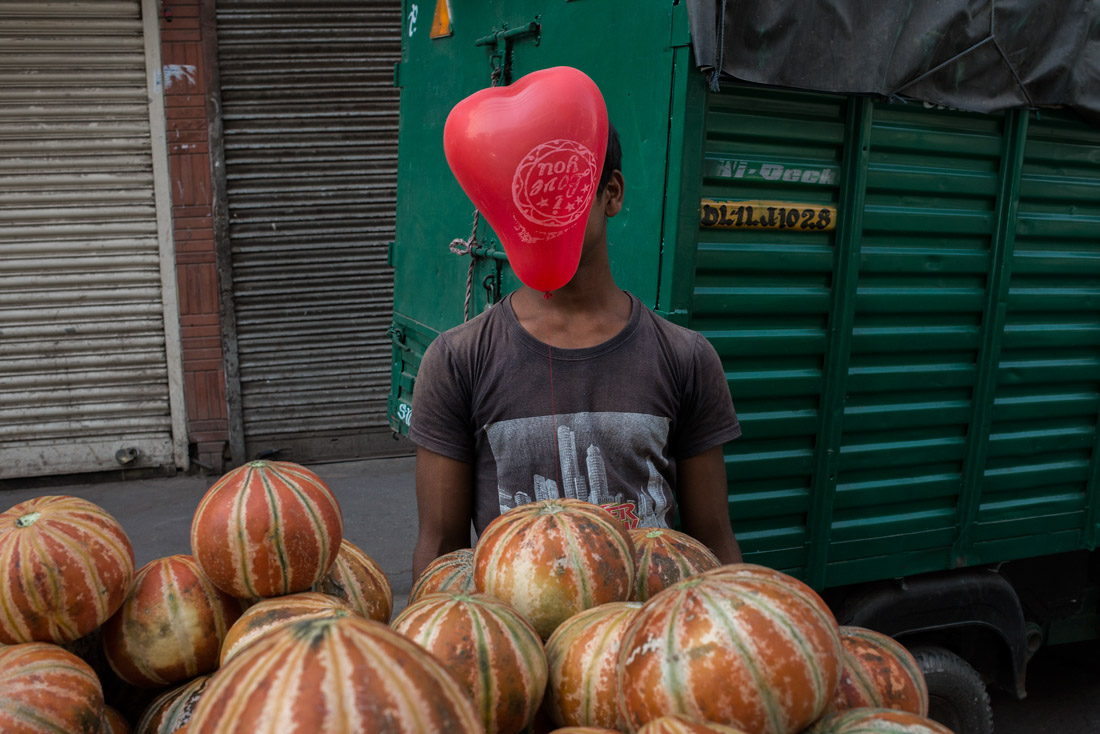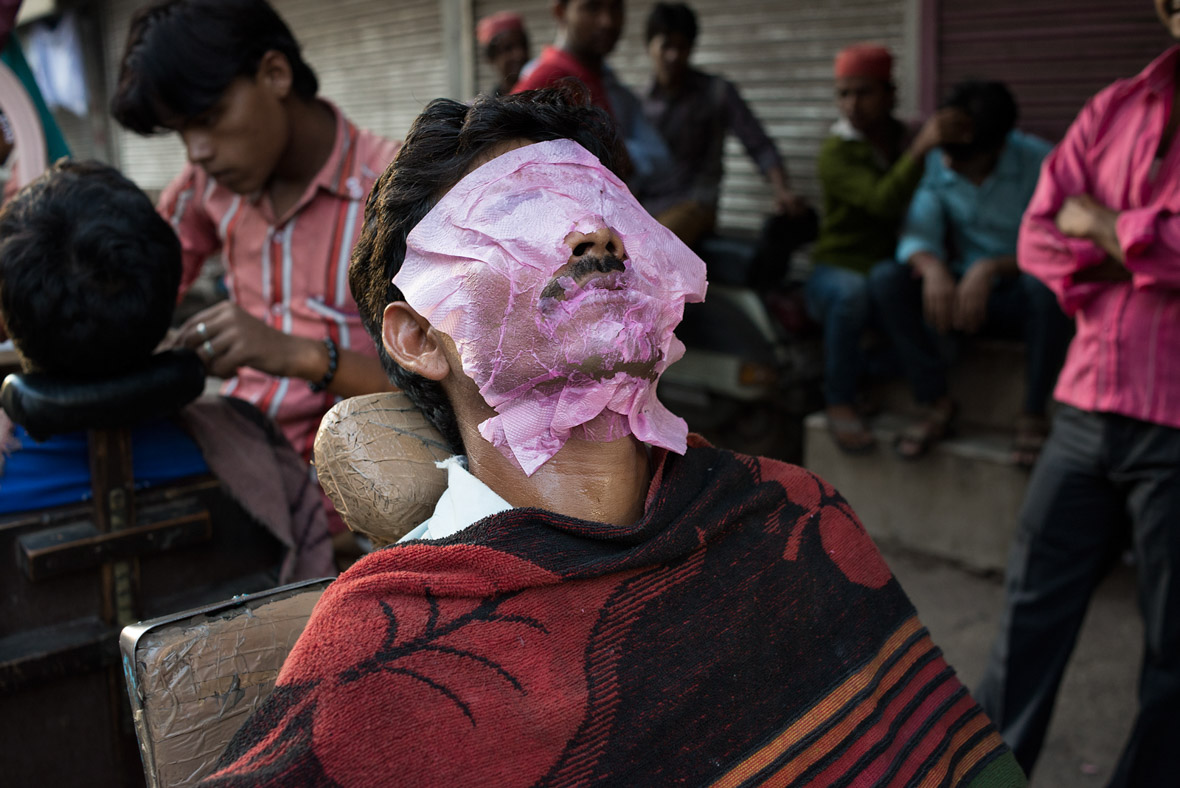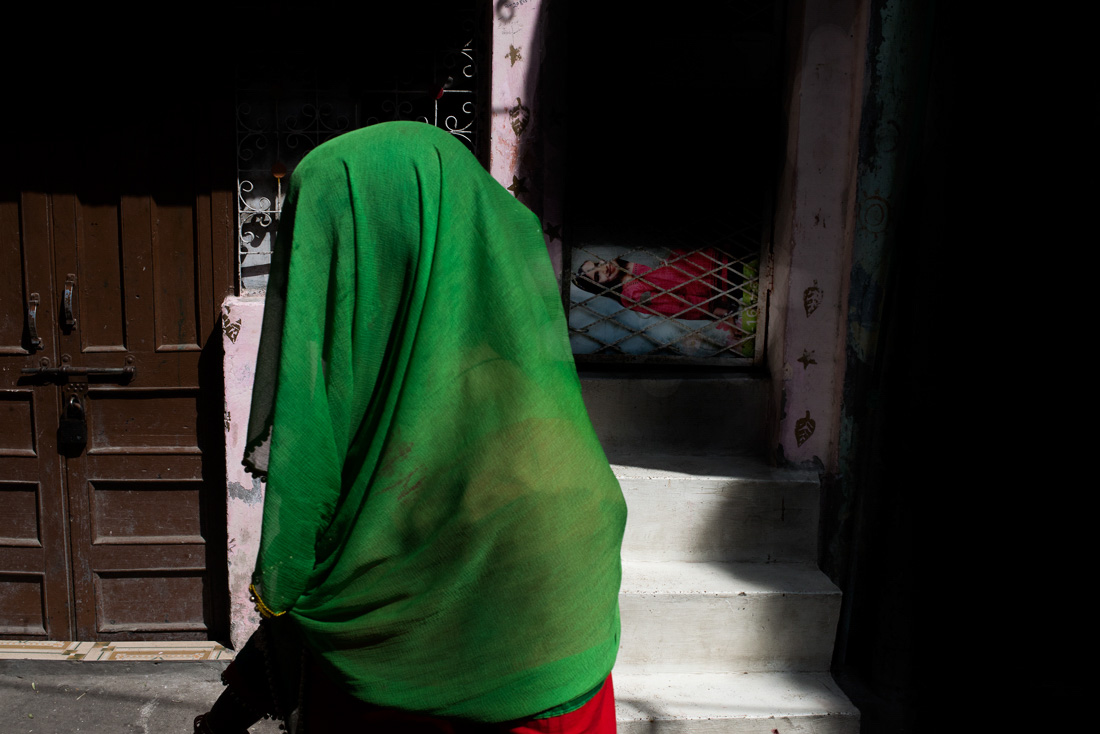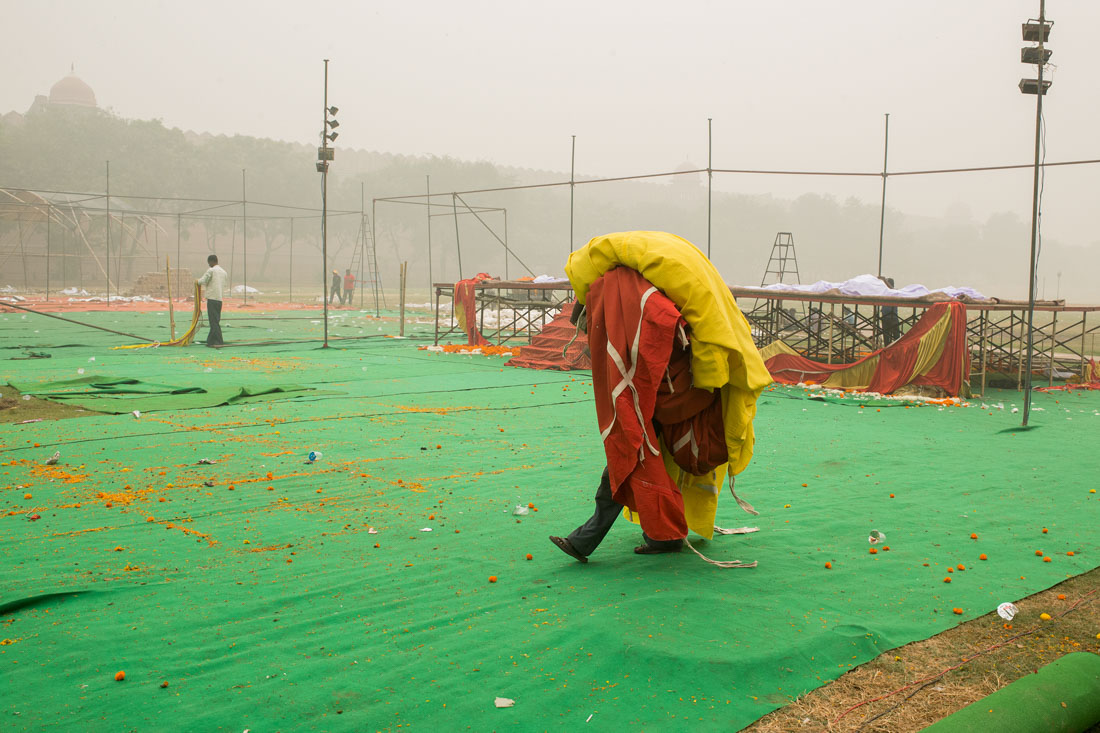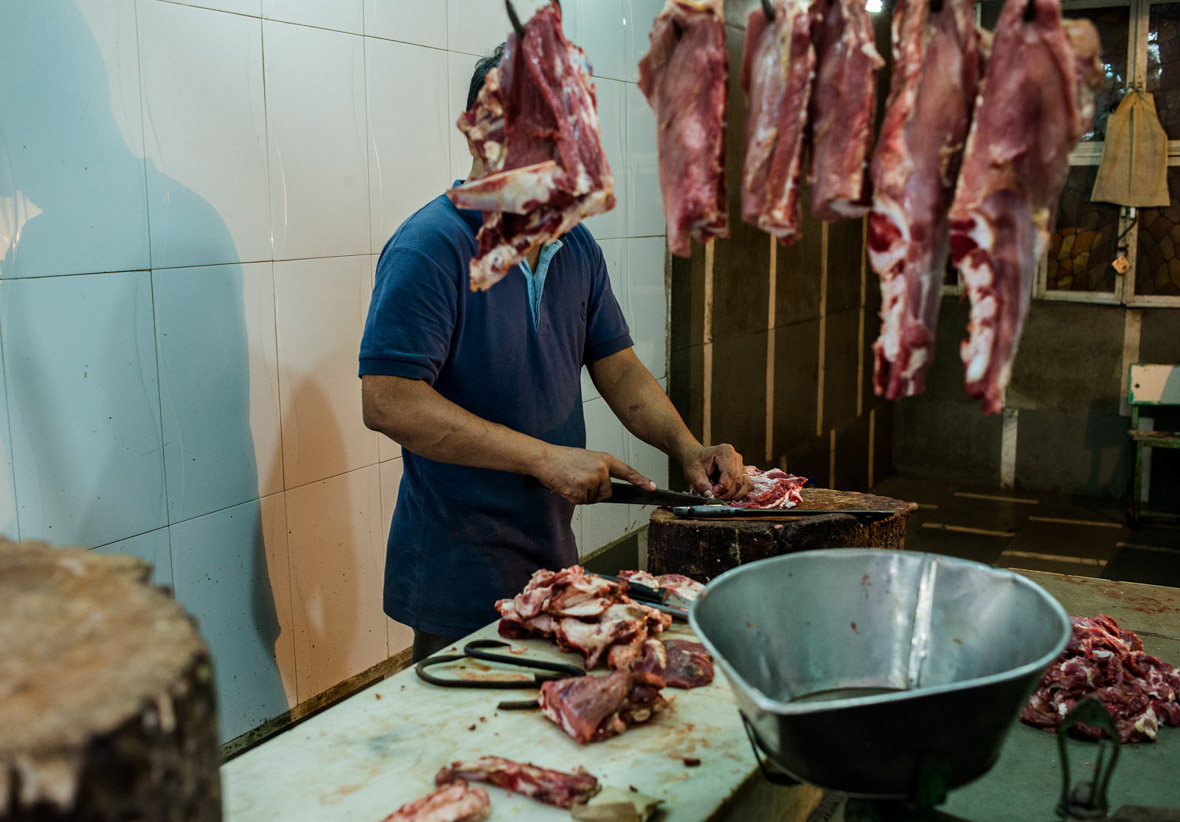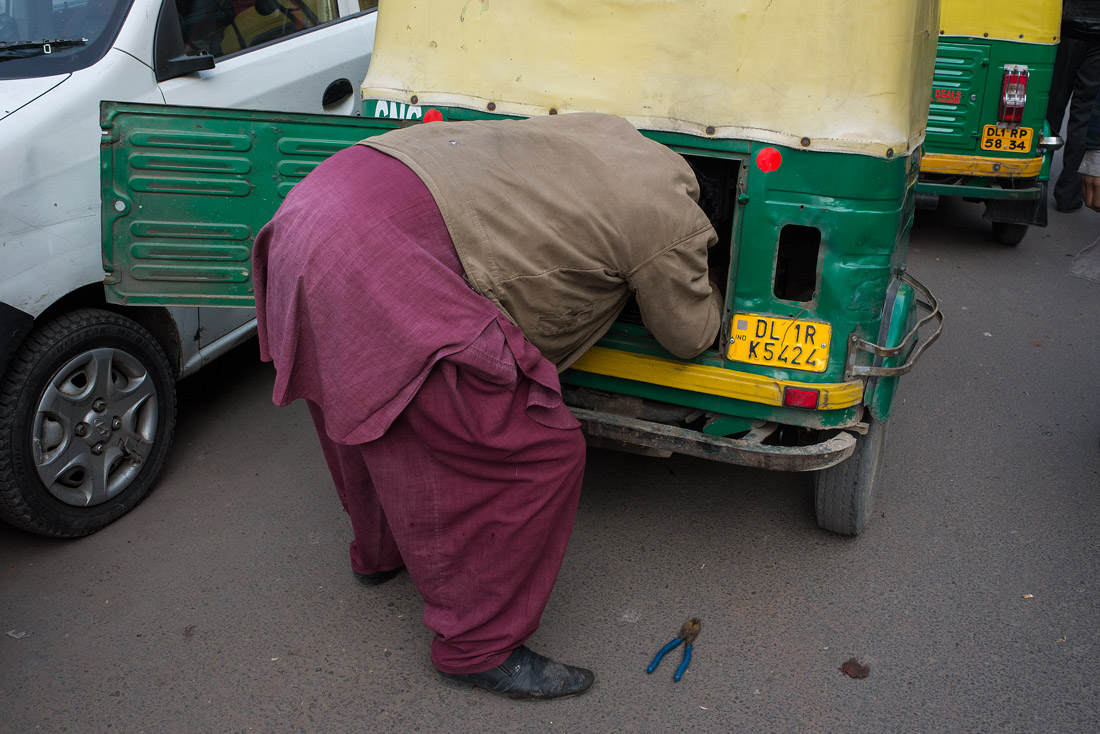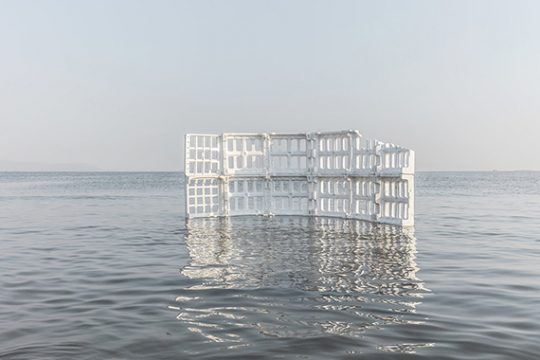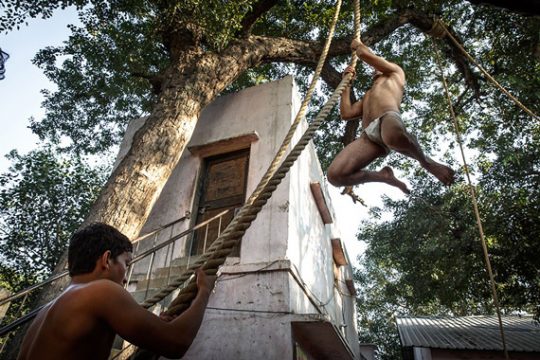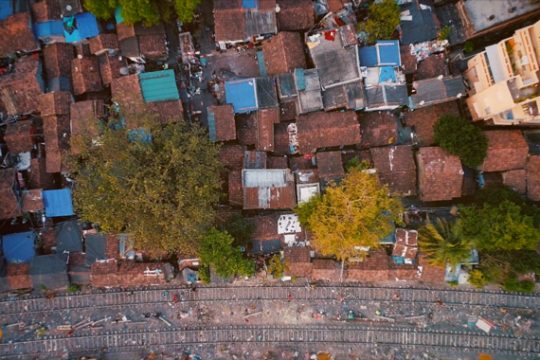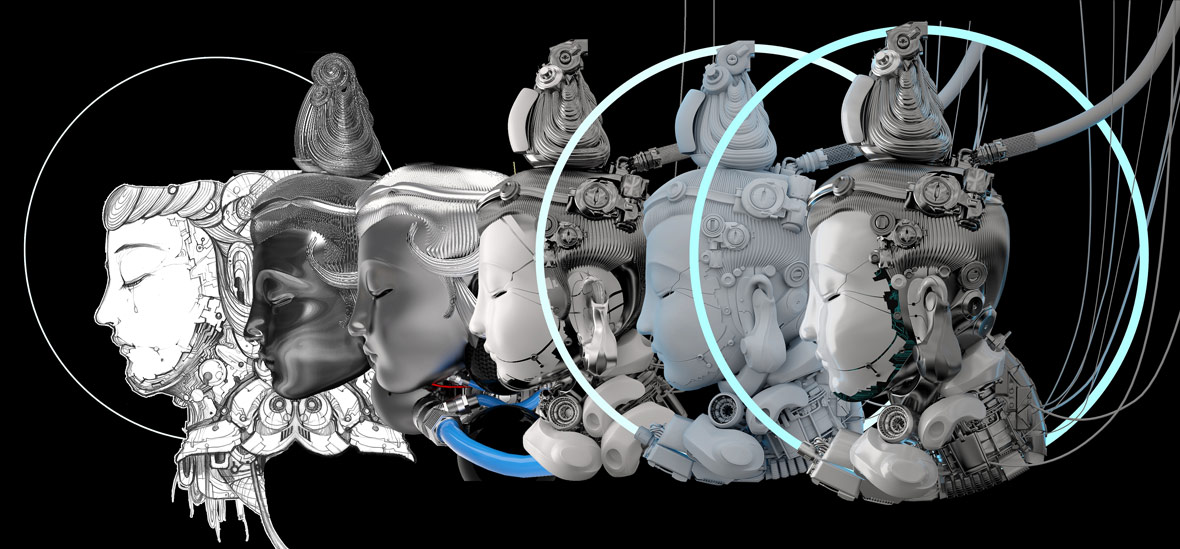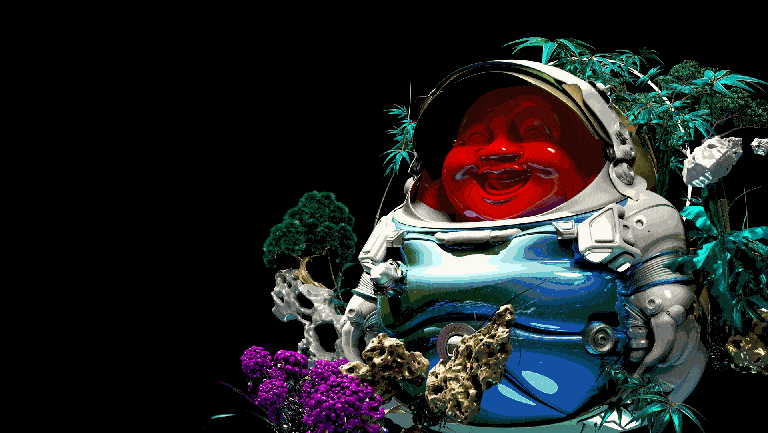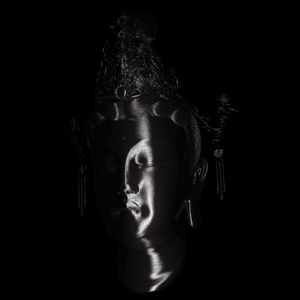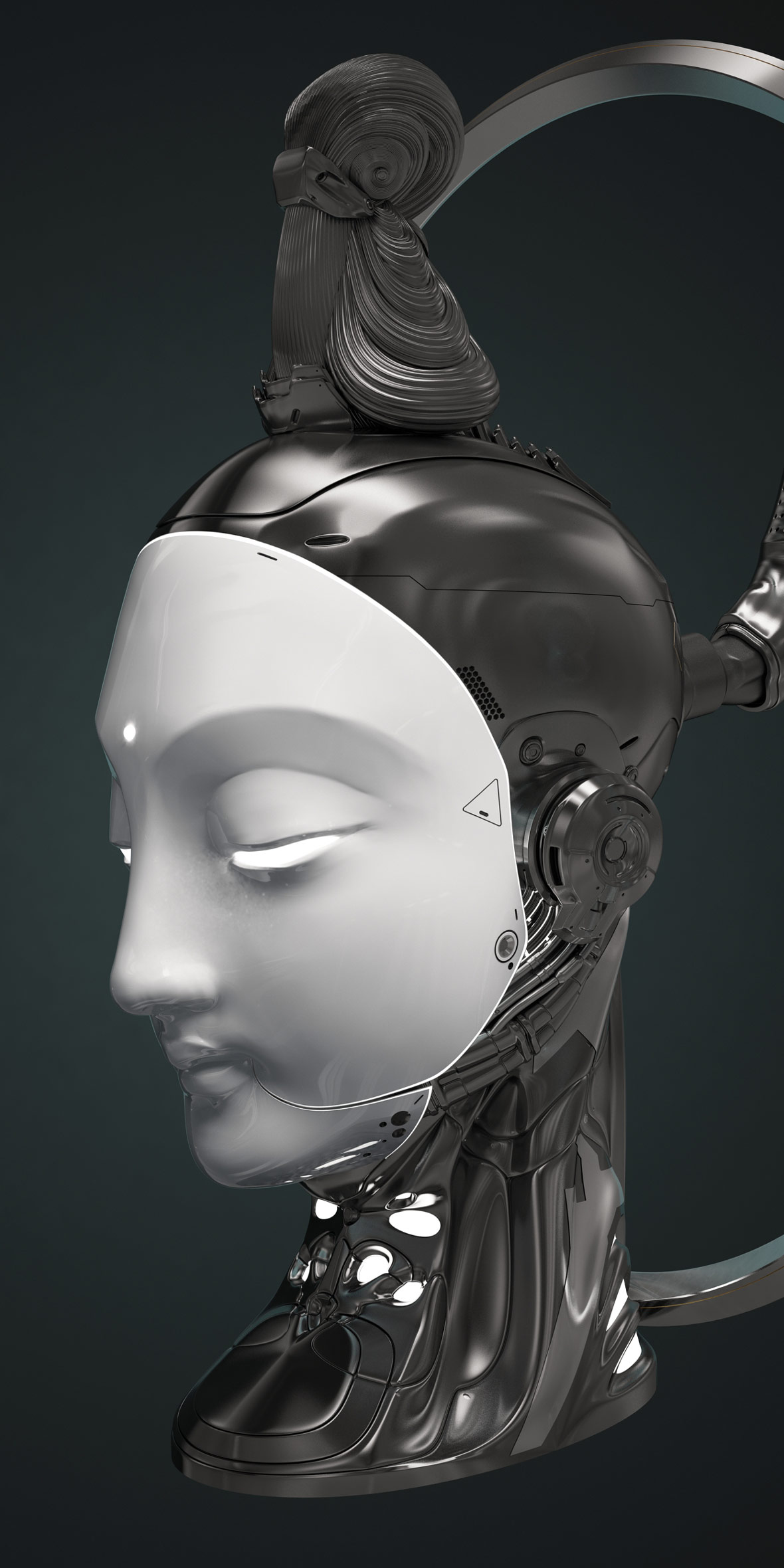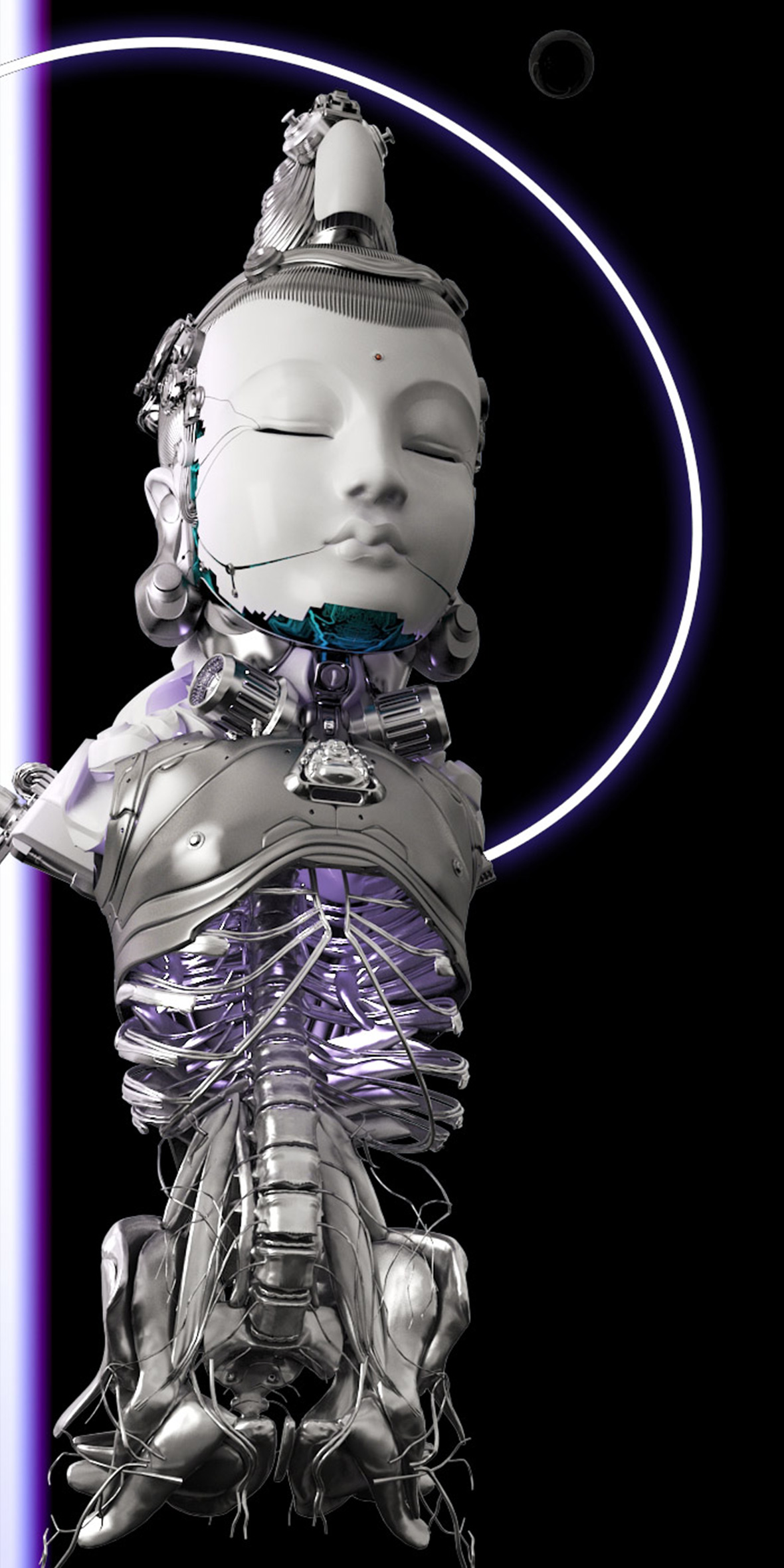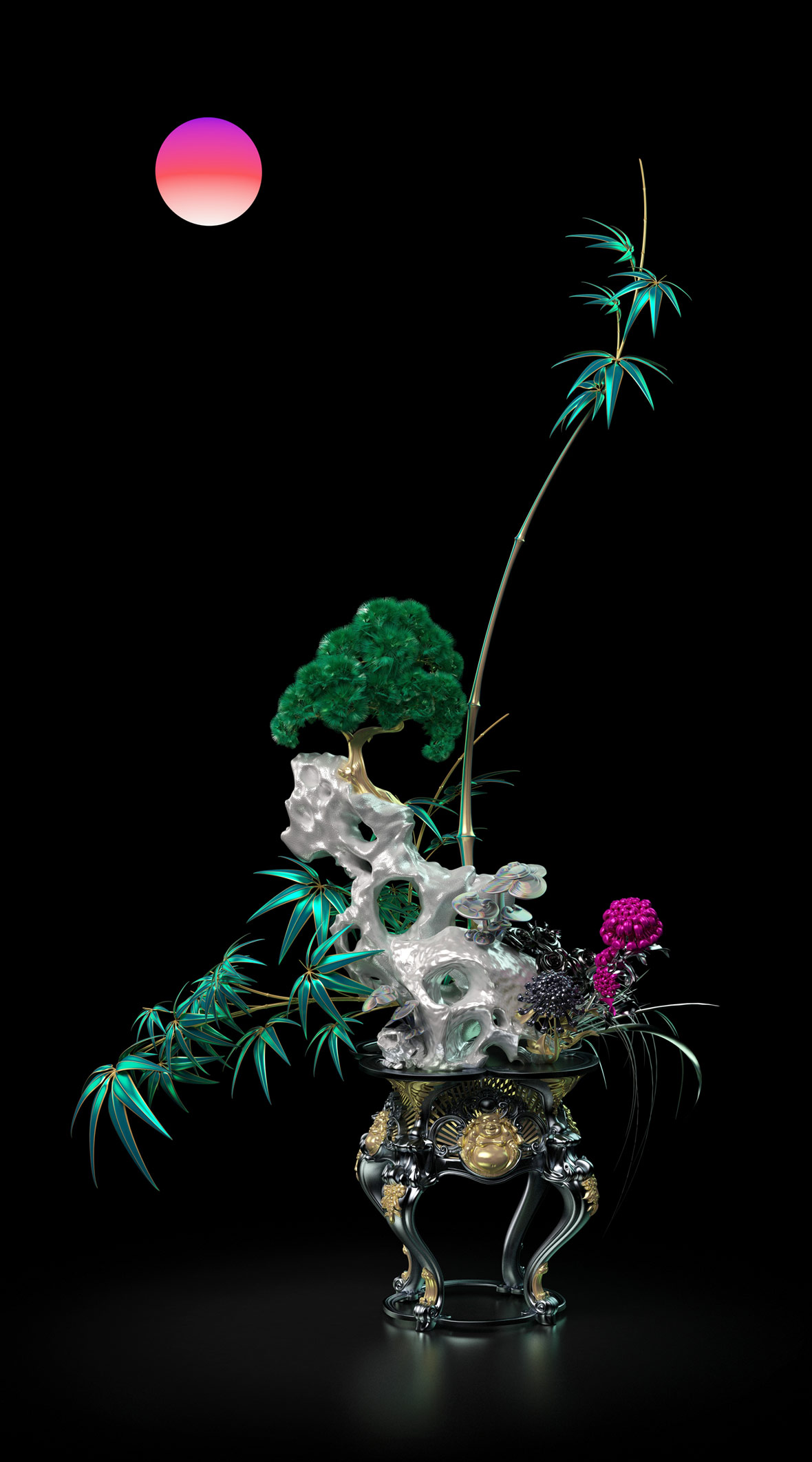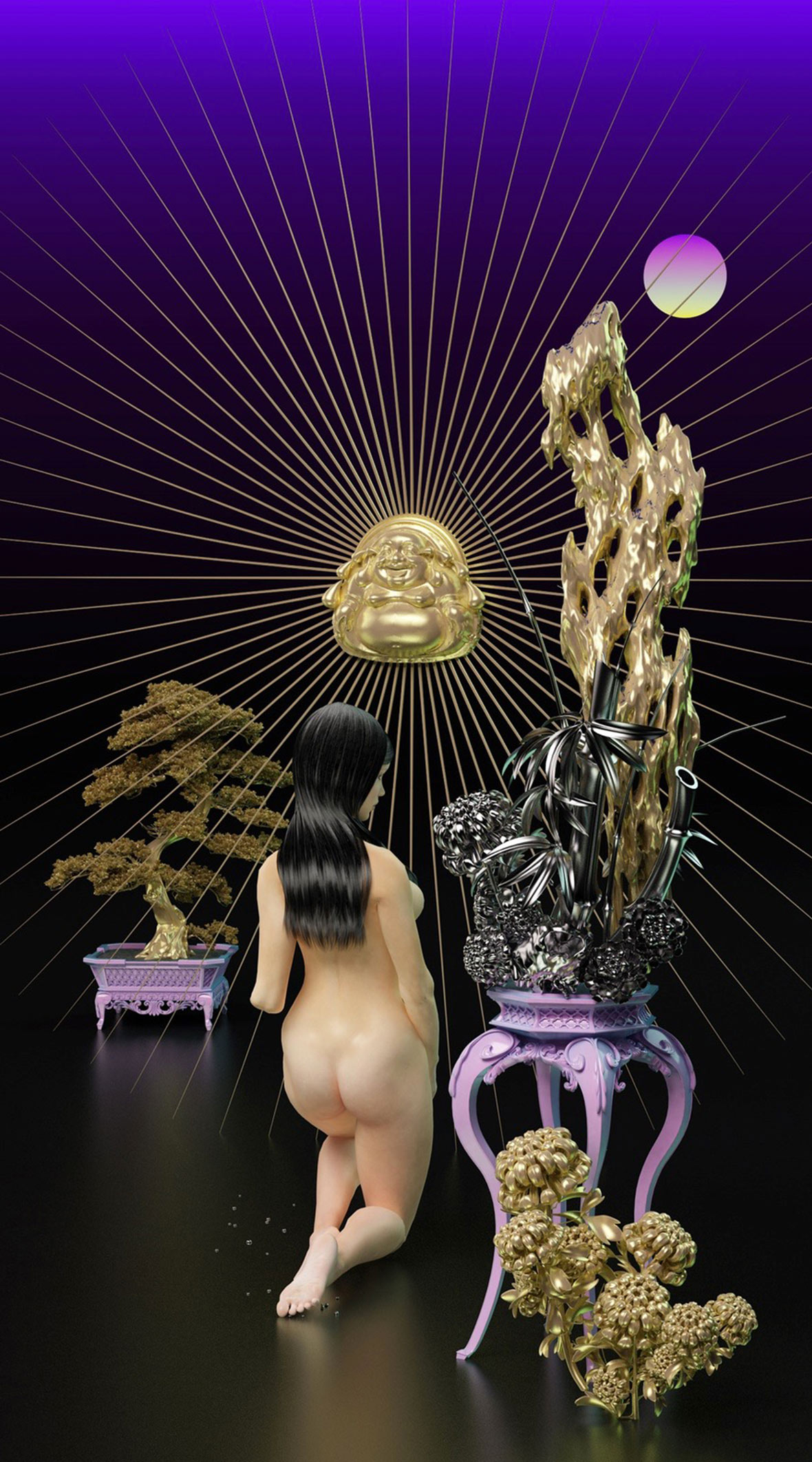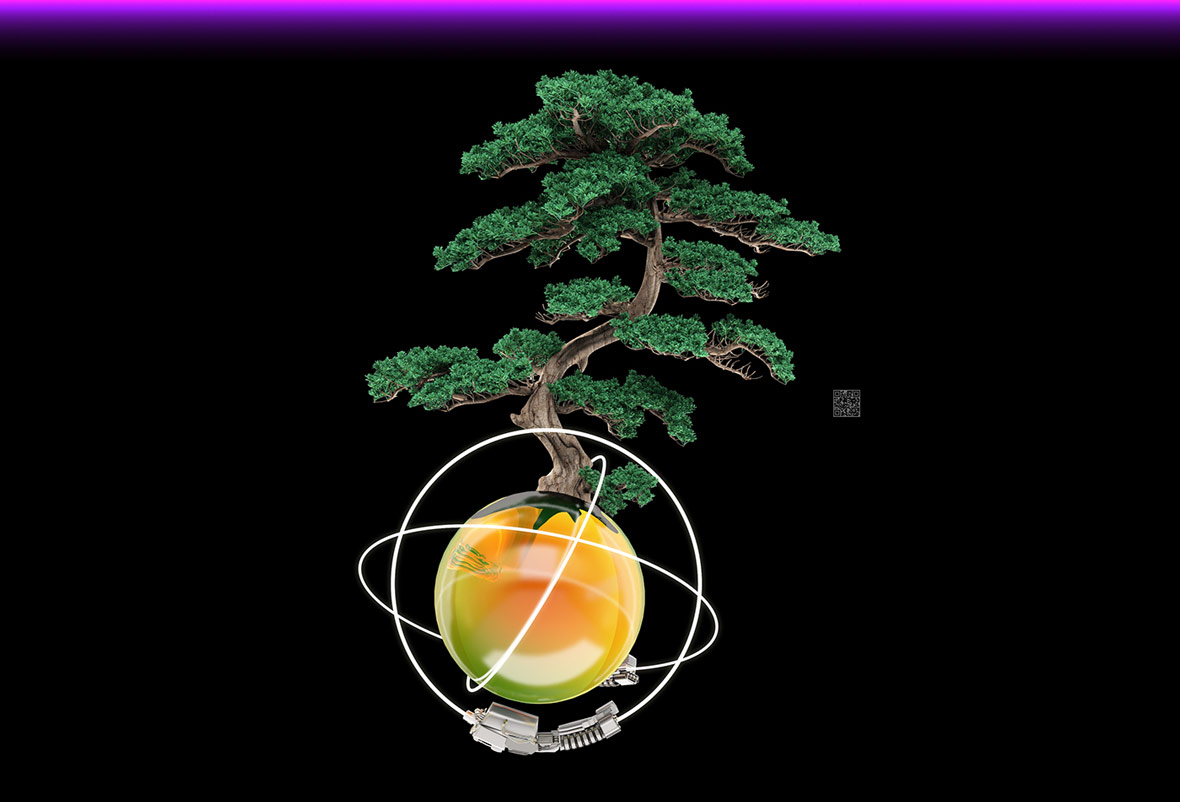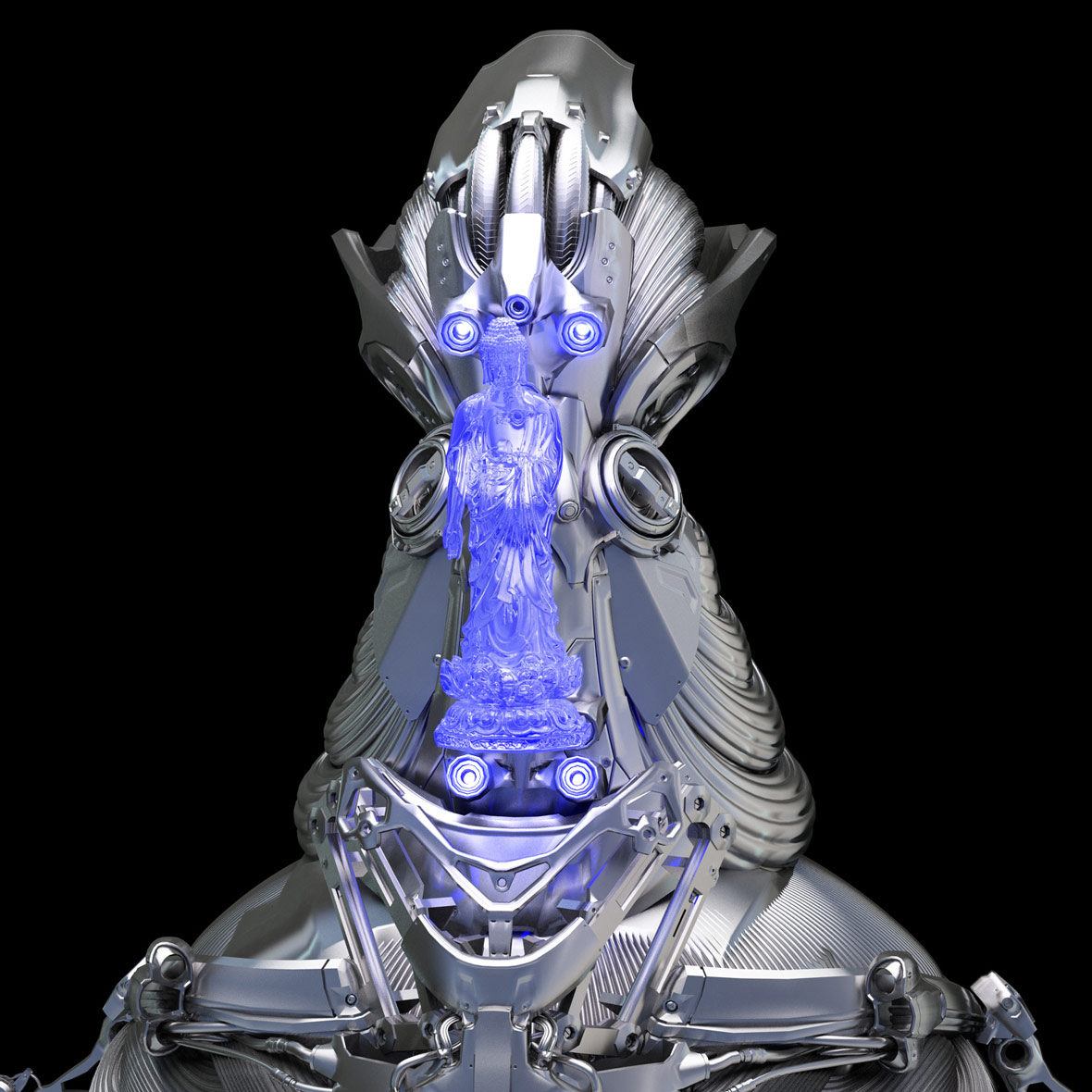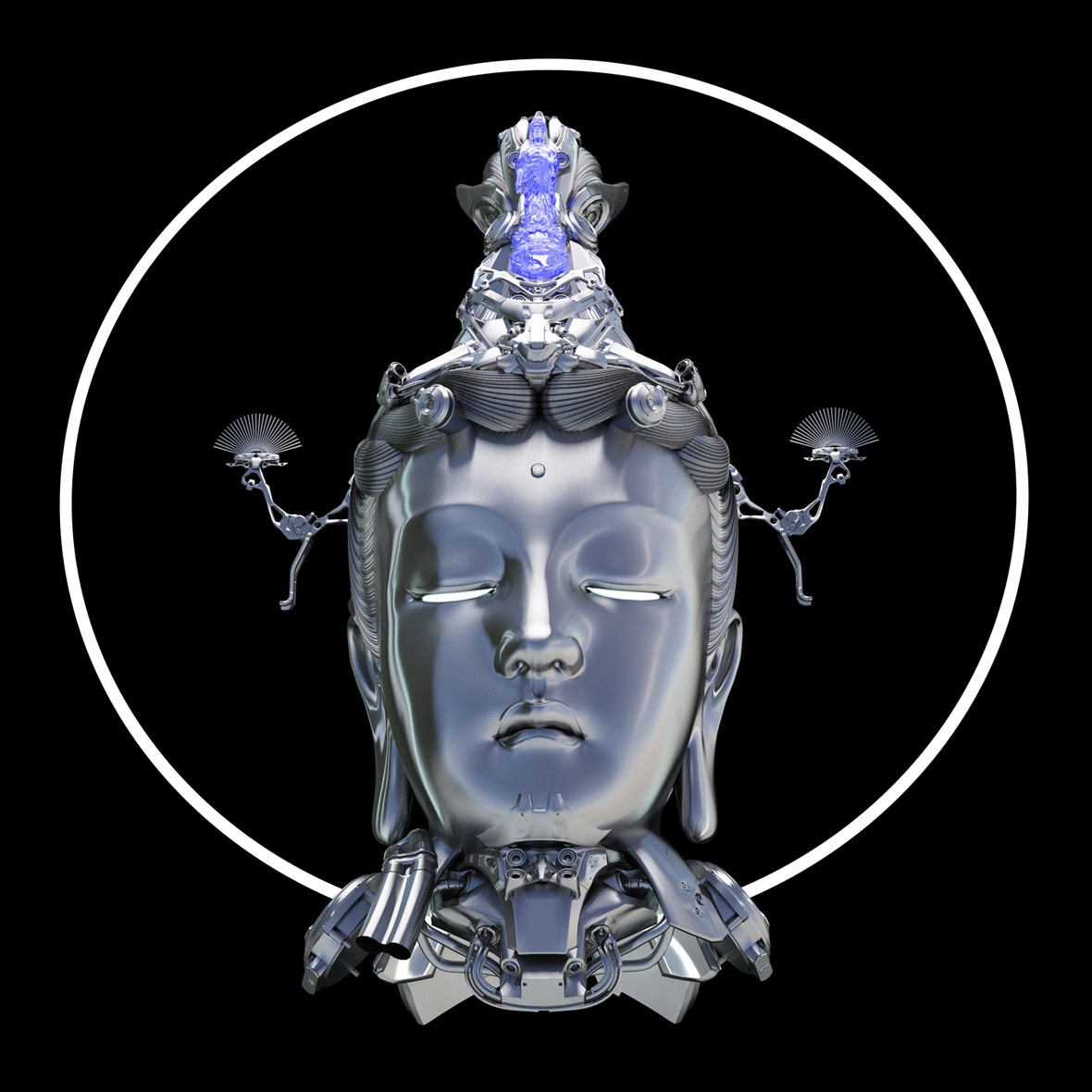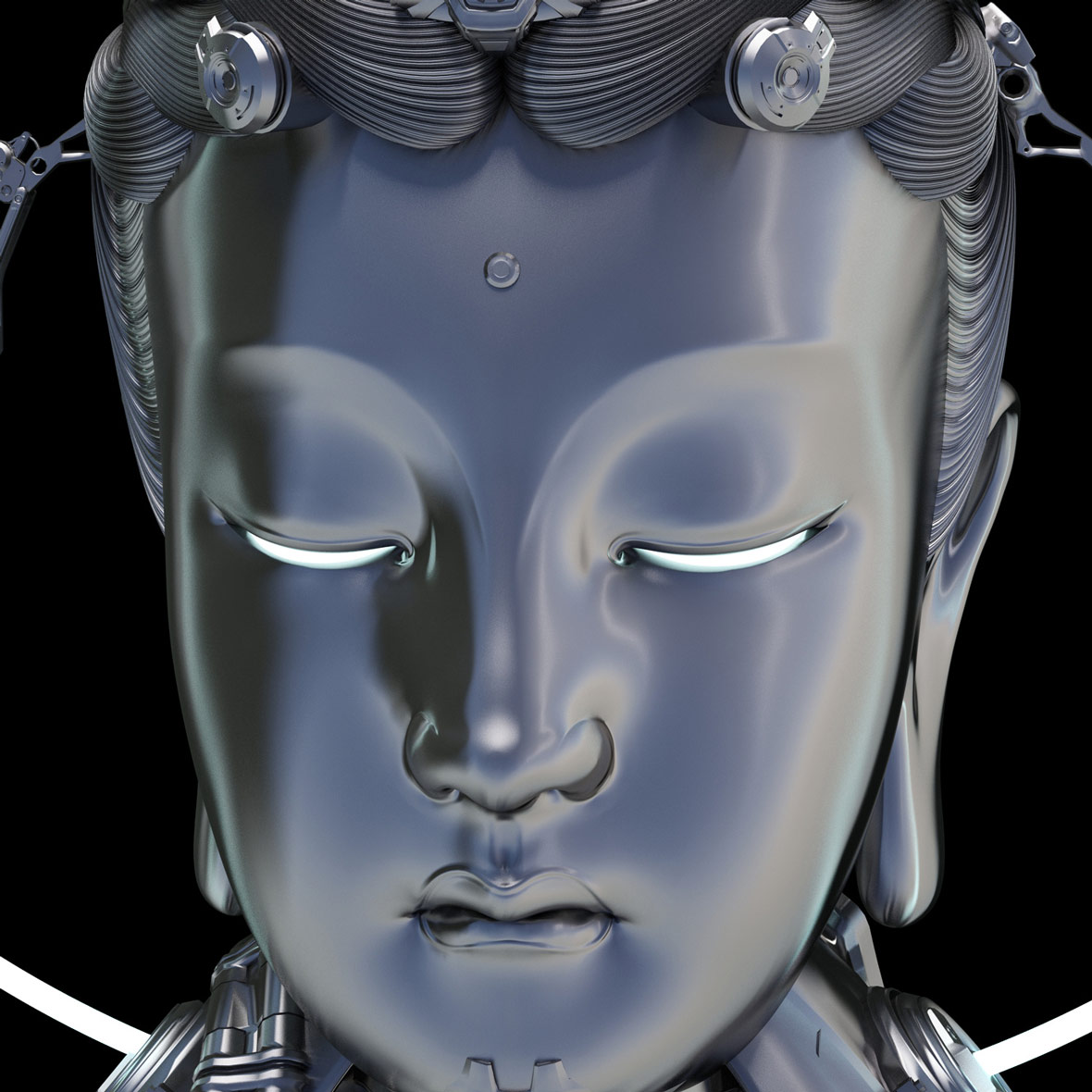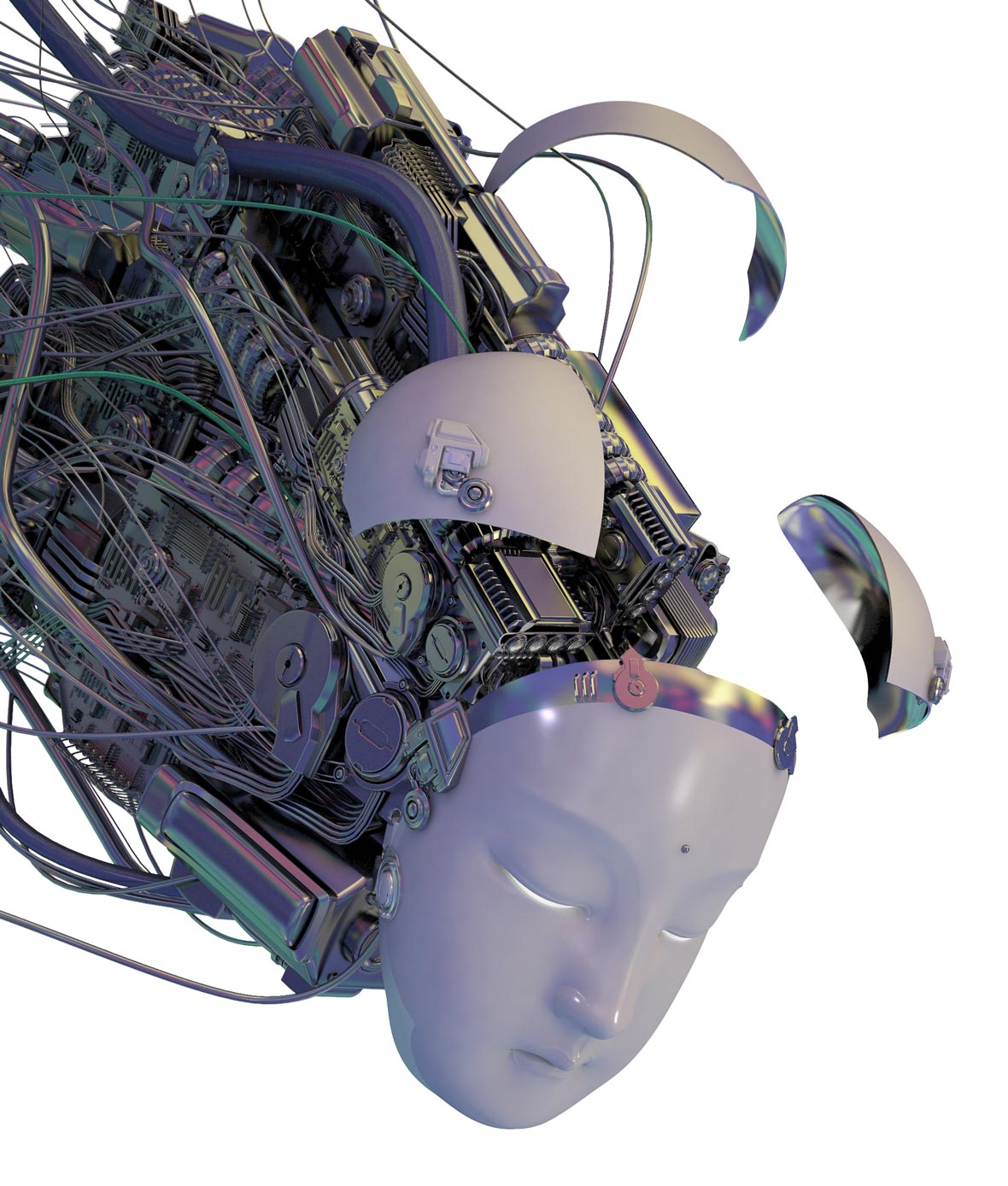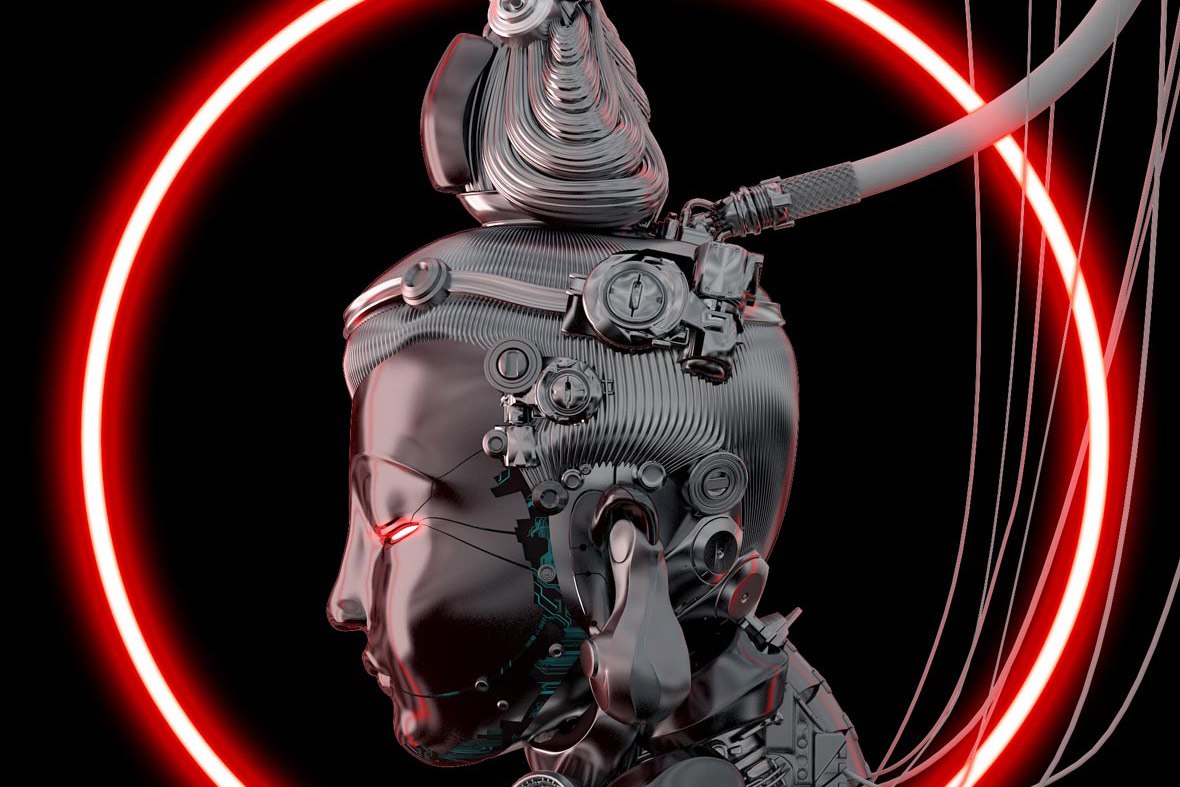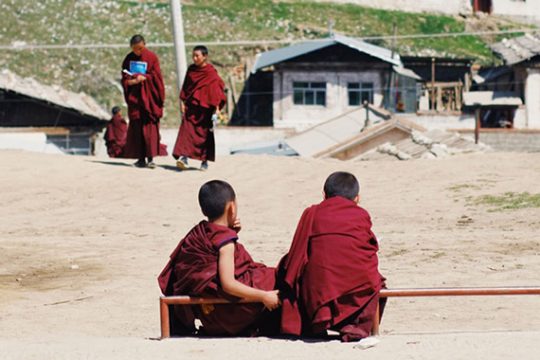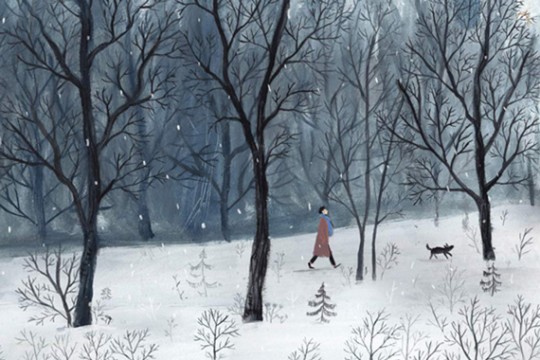
After reading the book Street Photography Now back in 2014, Pushkar Raj Sharma was inspired to pursue photography. Equipped with a camera in hand, he began spending all of his free time roaming the streets of New Delhi. “I searched the streets for certain moments,” he says. “I wanted to capture special moments that would accurately illustrate life in India. In my photos, I want to show the country’s richness, its frustrations, and most important of all, the spirit of its people.”
Pushkar Raj Sharma对街头摄影的爱好起始于2014年,那时他看了一本名为《Street Photography Now》的摄影书,之后他拿起相机,开始了对街头摄影的摸索。Pushkar喜欢将工作以外的时间花在街上,游走在这个城市里。“我一直在街上寻找一些特别的瞬间,让它们塑造出一个活生生的印度,你能在照片里看到它的生命,它的丰盛,它的烦恼和忧郁,当然最重要的是,看到生活在这里的人们的精神。”
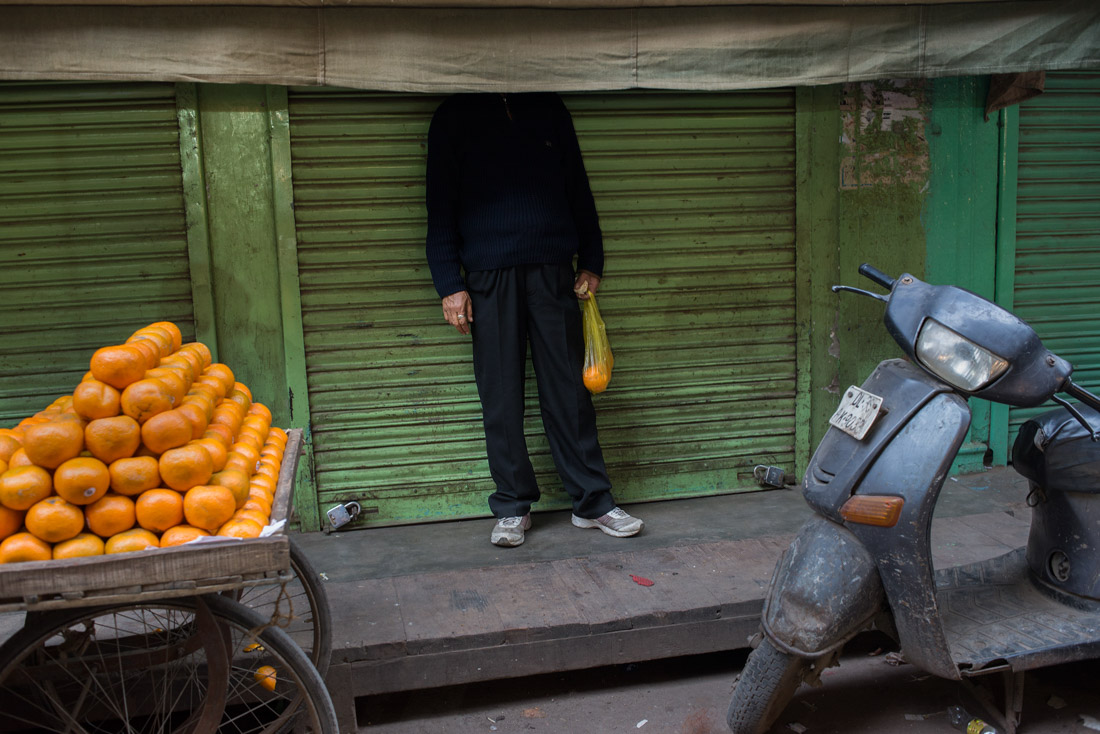
Working a full-time job in IT, Sharma rarely had time to travel. As a result, his hometown of New Delhi became the focal point of his photography. His Losing Identity photo series consists of candid street snaps of the city’s inhabitants, all depicted as anonymous individuals with obscured faces. From a man with a pink facial mask to strangers carrying cardboard boxes and women conversing through the fabric of their saree, the series masterfully uses this anonymity, this deletion of their personalities and identities through Sharma’s attentively composed frame, to form a narrative that explores a common thread that connects these individuals from different walks of life.
Pushkar的正职其实是IT行业的从业人员,因为工作的关系他很少有机会外出旅行,所以他的家乡——德里,成了他照片中不变的主题。这几年中,Pushkar在德里街头拍摄了不少照片,他将其中的一些整理为一个摄影系列,名为“Losing Identity”。照片里有敷着粉面膜纸的男人,搬运着纸皮箱的工人,透过面纱谈话的女人们等等,他们的面部都被各种物件遮挡住了,你看不见他们的真实样貌,也好像抹去了他们的性格或身份。但有趣的是,通过这种方式,不同的陌生人也能被一种相同的元素串联起来了。
The series led Sharma to confront an identity crisis of his own. In today’s world, with the ubiquity of smartphones and digital cameras, almost everyone can become a self-proclaimed photographer. With photography now easily accessible to many people, the art of photography has been, unfortunately, devalued. The internet is flooded with a deluge of photos processed using similar filters, leading to a few certain styles being cemented in the minds of the masses as aesthetically pleasing. This shaping of what is considered “good” has led to people being afraid of creating and experimental with unique, unconventional styles. Musing on his own identity as a photographer, Sharma often ponders, “Have I lost my identity on the streets while trying to establish one?”
这系列作品让Pushka思考起身份认同危机(identity crisis),在相机和手机高度普及的今天,每一个人都可以成为摄影师,但也正因为摄影变的简单了,摄影艺术的独特性也仿佛在同步被腐蚀,网络上每天生产着大量相同风格相同美学的照片,这让人们的审美变的趋向统一,丢失了原本每个个体该有的独特个性。“当我站在街头按下快门制造一张照片的时候,我是否也在慢慢丢失我自己的独特身份?”
